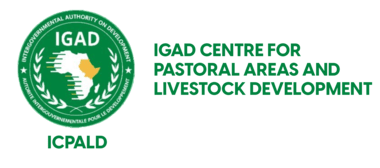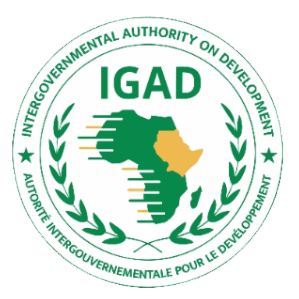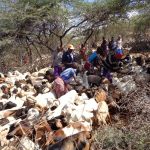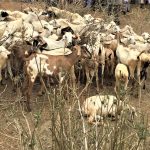On 17 May 2020, IGAD/ICPALD and FAO released a joint Rift Valley Fever (RVF) alert to IGAD and EAC Member States, as well as to key stakeholders and partners. The alert pointed out the high-risk areas and provided key recommendations to increase preparedness for this disease in the region. IGAD/ICPALD and FAO commend the steps taken following the alert, such as:
- Communication and follow-up made by ICPALD/IGAD with the chief veterinary officers (CVOs) and epidemiologists of high risk Member States;
- Activation of national RVF contingency plans in member countries in collaboration with Ministries of Health (MoH);
- Active surveillance and monitoring of local environmental conditions for better identification of risk areas;
- Equipment of RVF laboratory testing kits and reagents;
- Provision of vaccines aligned with the OIE Terrestrial Code and the requirements of trade partners when necessary;
- Increased readiness of field rapid deployment teams;
- Increased awareness of key stakeholders and partners in ‘hot spot’ areas.
RVF is a viral zoonotic disease transmitted by mosquitoes that can cause severe disease in animals and humans, including death and abortion in infected livestock. This epizootic disease in animals, which can spill over to the human population, tends to develop extremely rapidly following abnormally high seasonal rainfall at the local, national or regional scale.
RVF outbreaks can disrupt the livestock sector by depleting future generations of affected herds and therefore constitutes an important socio-economic and food security threat to vulnerable households. The disease can disrupt communities depending on animal trade by affecting their local animal markets. It can also affect the funds directly available to households through their animals and thereby impact their capacities to access health care and child education. As such, IGAD considers RVF a major threat to the economic development and stability of the region and strongly advocates for a regional approach to supplement national initiatives.
FAO maintains a system for RVF forecasting based on precipitation and vegetation anomalies, among other environmental factors. During the past six months, most of the Eastern African countries remained at a persistent risk of RVF occurrence due to a rainy season that was the wettest on record since 1981. Exceptional rainfall and floods have enhanced and maintained suitable environmental and climatic conditions that will likely lead to the explosive proliferation of RVF vectors in the region.
The precipitation forecasts for July -September 2020, which coincide mostly with the rainy season in Sudan, Ethiopia, South Sudan as well as the dry season in the United Republic of Tanzania, Kenya and Somalia, predict above-average rains for the whole region, particularly in northwestern Kenya, eastern Uganda, eastern South Sudan and southwestern Ethiopia. This suggests that the region will continue to remain under threat. The potential risk of RVF for July 2020 is still high for the region, particularly for Tanzania, Kenya, Uganda, South Sudan, Somalia and Ethiopia.
In particular, the analysis of change detection of the risk between June and July 2020 highlighted the following:
- An area of about 54,000 km2 still remains at high risk of RVF occurrence due to persistent suitability of habitat and climate for vector breeding and development;
- New areas are projected to become suitable for vectors with an overall increase of the risk areas of about 15%;
- About 30% of the area previously found at risk (potential for June 2020) is now at low risk of vector amplification.
The largest increase in risk areas for July 2020 is expected to occur in Tanzania (28% increased), Ethiopia (23% increase), Somalia (15% increased), South Sudan (10% increased) and Kenya (9% increased).
An overview of risk areas for vector amplification by countries is given below:
| Country | Moderate Risk (new areas at risk) | High Risk (persistently at risk) | Total % Area at Risk for July 2020 |
| Kenya | Tana River, Narok, Garissa, Wajir | Turkana, Marsabit, Samburu, Baringo, Laikipia, Meru, Kajiado | 37% |
| Ethiopia | Afar, SNNPR | Gambela, Somalia, Oromia, Amhara | 25% |
| Somalia | Galgaduud, Mudug, Togdheer, Bay, Juba Dhexe | Juba Hoose, Gedo, Bakool, Shabelle Hoose, Hiraan | 20% |
| South Sudan | El Buheyrat, Central Equatorial, Western Equatoria | Upper Nile, Jonglei, Eastern Equatoria | 17% |
| Tanzania | Tabora, Shinyanga, Simiyu, Tanga, Mbeya | Arusha, Manyara, Kilimanjaro, Dodoma, Singida, Iringa | 14% |
| Uganda | Lamwo, Abim, Bulambuli, Kasese, Kabale, Bushenyi, Kabale | Karamoja, Moroto, Kaabong, Kotido, Napak, Nakapirpirit, Amudat | 9% |
In case of any inquiry on the subject, including the need for technical support or information on the disease and at-risk areas, you may wish to contact the following technical officers from IGAD and FAO:
IGAD
Dr. Solomon J. Muchina Munyua, Director, IGAD Centre for Pastoral Areas and Livestock Development (ICPALD), Nairobi, Kenya – [email protected]
Dr. Guleid Artan, Director, IGAD Centre for Climate Prediction and Application (ICPAC), Nairobi, Kenya – [email protected]
FAO
Dr. Ricarda Mondry, Livestock Development Officer, Subregional Office for East Africa (SFE), Addis Ababa, Ethiopia – [email protected]
Dr. Charles Bebay, Regional Manager, FAO’s Emergency Centre for Transboundary Animal Diseases (ECTAD) – Eastern Africa, Nairobi, Kenya – [email protected]






